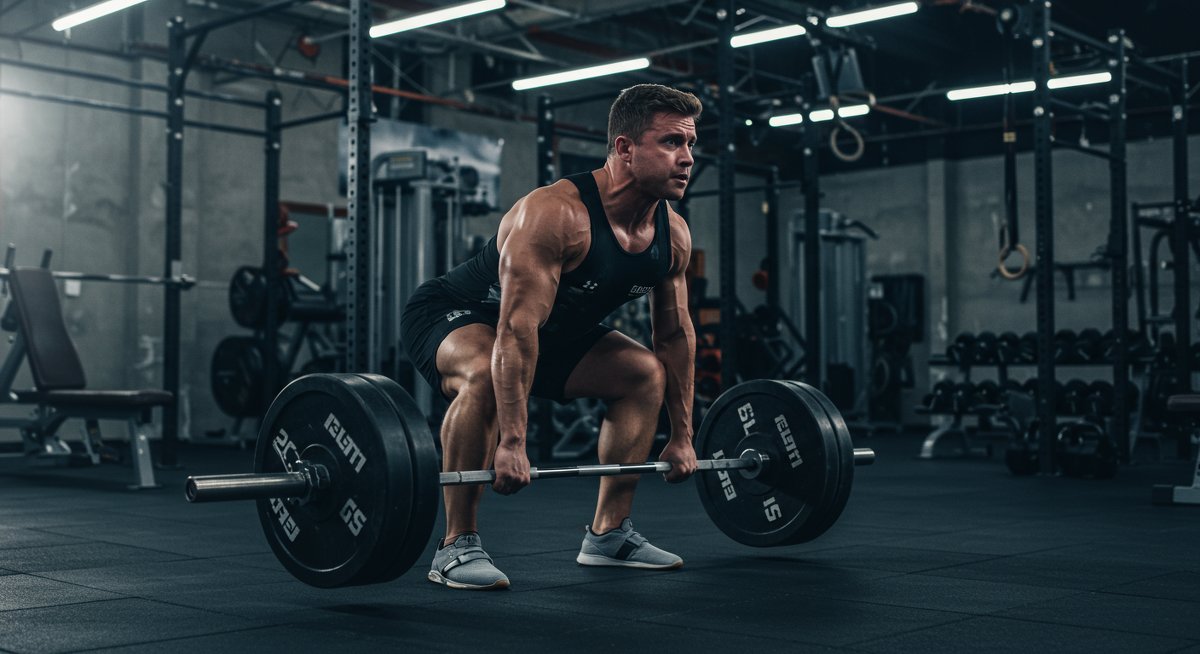The Reddit Post That Stopped Me in My Tracks
So, I was scrolling through r/powerlifting the other day, and I came across a post that just floored me. It was a meet report from someone who, just a year prior, had suffered a traumatic brain injury after falling 40 feet down a mountain. I mean, seriously, 40 feet! The fact that this person was not only alive but competing in powerlifting again is nothing short of incredible. What really struck me was the raw honesty and vulnerability in their writing. It wasn't just about the numbers they lifted; it was about the sheer grit and determination it took to get back to the platform after such a devastating injury. It made me think about how often we take our health and abilities for granted and how much we can overcome with the right mindset and support.

The post detailed the lifter's experience at the USAPL Festival of Steel, a year after the accident that caused permanent brain damage. The author, who was 24 years old at the time of the accident, shared the numbers: a 415 kg total at 72.3 kg bodyweight, with lifts of 132.5 kg squat, 102.5 kg bench press, and 180 kg deadlift. But the numbers are really the least interesting part of the story. What’s truly captivating is the journey this person undertook to get back to the point where they could even attempt those lifts. This isn't just a story about powerlifting; it's a testament to the human spirit and its capacity for resilience.
The Anatomy of a Comeback
Let's rewind a bit and delve into the specifics of what this lifter went through. In May 2024, they were hiking off-trail near Mt. Rainier when they fell 40 feet down a steep riverbank, hitting rocks headfirst. They were found 24 hours later by park rangers, having suffered severe trauma. Airlifted to a Level 1 trauma center in Seattle, they faced a long and arduous road to recovery. The injury list alone is staggering: widespread brain damage, a shattered right thumb, lumbar fractures, lung lacerations, and a host of other complications. The Reddit post highlights that the parts of his brain responsible for motor control, procedural memory, habits, sleep and balance, were severely damaged. This is no small thing. It is not hyperbole to say that every aspect of movement and life would have had to be relearned. To add insult to injury, the lifter suffered a comminuted and impacted intra-articular fracture at the first metacarpal base, or as the post describes it, a softly shattered palm. This effectively put an end to any hook grip dreams and made even basic gripping a challenge.
Despite the severity of the injuries, the lifter's background as a fit and active individual played a crucial role in their survival. Prior to the accident, they were in excellent cardio shape, thanks to their days as a varsity cross-country runner in high school. They also abstained from alcohol, nicotine, and other drugs, which undoubtedly contributed to their body's ability to withstand the trauma. However, they admitted to neglecting lower body training, a common mistake among many fitness enthusiasts. As a result, their squat and deadlift numbers were not as impressive as their bench press, which had reached 2 plates for a 1RM. The accident forced them to confront this imbalance and prioritize a more well-rounded approach to training.
What It Takes to Rebuild From Scratch
Okay, so this person has gone through hell and back. But what does that actually mean for someone who is not trying to recover from brain damage? Well, the lessons here are universally applicable. First and foremost, it highlights the importance of a strong foundation. This lifter's pre-existing fitness level undoubtedly contributed to their survival and recovery. Even though they weren't a dedicated strength athlete, their cardiovascular fitness and overall health gave them a fighting chance. This underscores the value of consistent exercise and healthy habits, regardless of your specific fitness goals.
Another key takeaway is the importance of prioritizing rehabilitation. The lifter spent months in physical therapy, relearning basic movements like balancing and standing on one leg. This is a crucial step that many people overlook, especially when dealing with less severe injuries. Proper rehabilitation not only helps to restore function but also prevents further complications and ensures a safe return to activity. In addition, the lifter openly discusses a need for therapy/psychotherapy to deal with the trauma. There is no shame in admitting this need, and it underscores the importance of addressing mental health in addition to physical health.
Furthermore, the lifter's experience highlights the need for patience and persistence. The road to recovery was not linear, and there were setbacks along the way. They faced muscle imbalances, neurological issues, and various aches and pains. Despite these challenges, they remained committed to their goals and gradually worked their way back to the platform. This is a reminder that progress is not always easy or immediate, but with consistent effort and a positive attitude, anything is possible.
The Unspoken Truth About Fitness Comebacks
Here's the thing that most fitness articles leave out: comebacks are messy. They're not a straight line from point A to point B. There are setbacks, plateaus, and moments of doubt. This lifter's story is no exception. They openly admitted to struggling with muscle imbalances, neurological issues, and persistent pain. They had to modify their training program to accommodate their injuries, switching from high bar to low bar squats due to knee pain. They also had to be extra cautious with bracing and valsalva maneuvers, as these could increase intracranial pressure and exacerbate their headaches.

Moreover, the lifter's experience highlights the mental and emotional challenges of recovery. They described feeling "lost" and "turned off" after their squat attempts, indicating the cognitive effects of their brain injury. They also acknowledged the need for therapy to address the trauma they had experienced. This is a crucial aspect of recovery that is often overlooked. Physical injuries can have a profound impact on mental health, and it's important to seek professional help when needed. It's okay to admit that you're struggling, and it's a sign of strength, not weakness.
Making This Work in the Real World
So, how can you apply these lessons to your own fitness journey? Well, the first step is to assess your current situation. Are you recovering from an injury? Are you dealing with chronic pain? Are you struggling with motivation or self-doubt? Once you have a clear understanding of your challenges, you can start to develop a plan to overcome them. If you're recovering from an injury, work closely with a physical therapist or other healthcare professional to develop a rehabilitation program that is tailored to your specific needs. Be patient and persistent, and don't get discouraged by setbacks. Remember that progress is not always linear, and it's okay to have bad days. When this happens, take the necessary rest, and come back stronger.
If you're dealing with chronic pain, explore different pain management strategies, such as medication, physical therapy, or alternative therapies. Find what works best for you and stick with it. It's also important to address the underlying causes of your pain, such as poor posture, muscle imbalances, or emotional stress. In addition to physical and mental health, it is also important to eat properly. Make sure that you are eating nutritious meals, so your body has all the fuel it needs to recover and become stronger. Eat lots of lean protein, healthy carbs, and healthy fats. Supplement with vitamins and minerals as necessary.
From Theory to Action: A Practical Guide
Okay, let's get down to brass tacks. How do you actually put this into practice? Here’s a step-by-step approach to applying the lessons from this lifter's incredible comeback:
Assess your baseline: Before you start any new fitness program, it's important to assess your current fitness level and identify any limitations or imbalances. This may involve a visit to a physical therapist or a consultation with a certified personal trainer.
Set realistic goals: Don't try to do too much too soon. Start with small, achievable goals and gradually increase the intensity and duration of your workouts as you get stronger. Also, be sure that your goals are realistic. Do not set goals that are completely out of reach, as you will quickly become discouraged. Set goals that challenge you but are achievable with hard work and dedication.
Prioritize recovery: Make sure you're getting enough sleep, eating a healthy diet, and managing your stress levels. These are all crucial for recovery and preventing injuries. Listen to your body. Take the time you need to rest and recover, and do not push yourself too hard.
Find a support system: Surround yourself with people who will encourage and support you on your fitness journey. This could be a friend, a family member, a coach, or an online community. It's important to have someone to lean on when things get tough. Having this support system will help keep you motivated.
Celebrate your progress: Acknowledge and celebrate your accomplishments, no matter how small. This will help you stay motivated and focused on your goals. Be proud of yourself, and take the time to celebrate your victories.
My Final Thoughts
Here's what I think about this whole story: it's a powerful reminder that anything is possible with the right mindset and support. This lifter's journey is a testament to the human spirit and its capacity for resilience. It's also a reminder that fitness is not just about numbers and aesthetics; it's about health, well-being, and the ability to overcome challenges. If this person can overcome a 40-foot fall and brain damage, then you can overcome whatever challenges you're facing in your own fitness journey. You have to start somewhere. It is not going to be easy, but it will be worth it. So take your creatine, get your sleep, and prioritize your health. You never know what life may throw at you, but with a strong body and a resilient mind, you'll be ready to face anything.